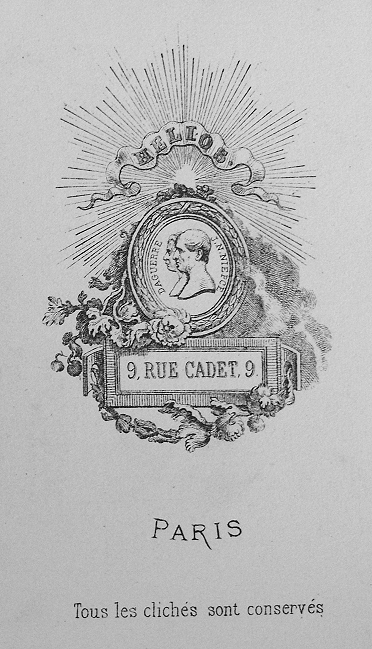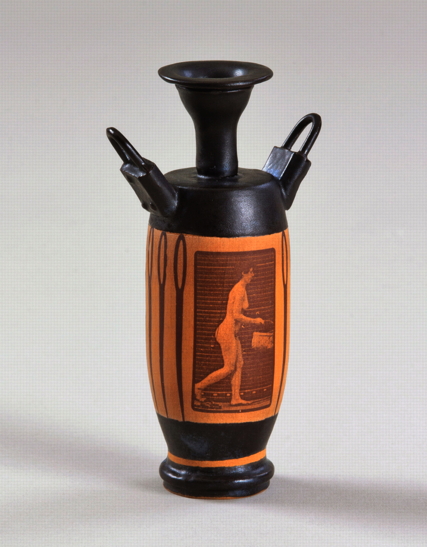
October, 2013. Paris is a black-and-white film. All of the cars, all of the motorbikes and scooters, are black, grey, or white. The people wear black, grey, or white.

The traffic no longer keeps up the continuous klaxon blaring that I remember so well (has there been a change in the law?) I am reminded of Maxim Gorky’s response to the first Lumière films, famously shown in this city in 1895:
“Last night I was in the Kingdom of Shadows. If you only knew how strange it is to be there. It is a world without sound, without colour. Every thing there—the earth, the trees, the people, the water and the air—is dipped in monotonous grey. Grey rays of the sun across the grey sky, grey eyes in grey faces … shadows of a bad engraving.”
Only the vibrant fruit and vegetables outside the shops give the city any colour, which has otherwise leached out of the streets.
I’m staying for several weeks in a studio flat on rue Lafayette, and one day I decide to walk two Metro stops to Cadet. Some years earlier, I had come across a tenuous but possible reference to a link with Eadweard Muybridge, and an address in rue Cadet. It’s a busy, interesting street, alive with lunchtime diners outside cafes, local traders, busy, busy….
Will number 9 still be the pre-1860s building? I have no idea what to expect. Suddenly there it is. If I had been sent to Paris for film location research, to find the spot to represent the 1860s Muybridge connection, here it is, and without much need of a period makeover. In the center of the wide building that is no. 9 there’s an archway, with big open wooden doors.

This 18th-century building is where Chopin gave his first recital in Paris, and was once the home of the gardener of Louis XV. Over the archway is an old sign: PHOTO INDUSTRIELLE. As I walk through the arch the decades peel away in union with the peeling paint on the walls, the scene becomes an Atget photograph of the grimy Paris that in recent times has largely disappeared.

Opposite the arch is a peak-roofed glass-sided greenhouse – or perhaps once a glasshouse studio?

Individual artisan workshops, mostly now storerooms, form the perimeter of the cobbled yard, one side of which is set up as an experimental urban garden. Local workers sit on benches beside the period streetlamps, reading Le Monde to while away their lunch break hour.
Here is the story, as it originally appeared on this blog in 2010.
===================
In search of ‘Helios’
Onward away ! away his steeds,
Mad with the momentary pause,
Plunge through the scattered clouds !
Helios !
Richard Henry Horne
Prometheus the Fire-bringer (1864)
A few years ago, I noticed that the online catalog of the George Eastman House included an early address for Muybridge – in Paris. Could he really have been located in France in 1864?
Late Summer 1861 he wrote to his uncle that he was leaving for the continent “on business that may detain me some months.” On 3 December 1862 the Daily Alta California reported: ‘A letter from Paris of Oct. 24th says: There has been a great influx of Californians within the past few weeks. […] E.J. Muygridge was here a few days since, but has returned to London…’
I contacted George Eastman House.
Hello, I note that one of the addresses on your Bibliog file (online) for Eadweard Muybridge is:
ADDRESS:
France, Paris — 9 rue Cadet (1864)
This was the address of photographer M. Berthaud. I believe that Muybridge may indeed have been in Paris at this time, but there are no details in any of the biographical works that I have been able to find. Would it be possible to find out where this address came from? Any help would be much appreciated. Thank you, Stephen Herbert (Muybridge Consultant, Kingston Museum).
I received the following response:
Dear Mr. Herbert,
Yes, that does seem questionable. I do not have a way of supporting this Paris address and am inclined to delete it from our (new) database (not yet available to offsite research). As a compromise, I have moved it into 2nd place from 1st place in the record. Sorry to be so slow in responding and so unhelpful as well.
Joe R. Struble
Assistant Archivist
So that, I thought, was that. No way to check.
And then days ago, a private collector – finding the “Rue Cadet” address on my website during an internet search – sent me this.

On the back of which, is this:

Yes, the trade name of Mons. Berne-Bellecour in association with M. Berthaud was – ‘Helios’.
Around 1867, Michel Berthaud became associated with Etienne Berne-Bellecour (active in photography from 1864 to 1870 – was this E. Berne-Bellecour the painter?) who had already established the ‘Helios’ firm – we do not yet know exactly when. By 1867 Muybridge was back in France, so unless Berne-Bellecour was using the name Helios in 1865-66, or earlier, our Muybridge connection disappears.
(After Bern-Bellecour’s departure in 1870 the firm continued under Berthaud, using the ‘Helios’ name for decades, and with many branches in the 1870s-80s.) [Eves Lebrec]
The possibilities seem almost endless – but here are three:
a) Muybridge worked in France for M. Berne-Bellacour’s company in the 1860s, which used the name Helios as an encompassing title to cover the photographs of more than one partner. This was where Muybridge developed his photographic skills, and accounts for why he isn’t found in the English press (including the photographic periodicals) at that time, and doesn’t seem to have been a member of any British photographic society. Somewhere there is evidence of this French connection, used by the GEH cataloguer.
b) Muybridge, who certainly visited Paris in the 1860s, noted the name Helios at M. Berne-Bellecour’s establishment, and adopted it for the same reason – a trade name would cover the published photographs of more than one photographer – which would tie in with Weston Naef’s suggestion.
c) Complete coincidence.
If (b) or (c), the GEH cataloguer must have noted the address on a dated French carte printed with the ‘Helios’ design, and aware that this was Muybridge’s trade name, made a leap of faith and assumed that he was working from that address at that time.
For a few moments I hoped that I would find an early use of Muybridge’s scratched ‘Helios’ with an acute accent (Hélios), a tiny Roland Barthes ‘punctum’ that would instantly prove a French connection, but as I peered fruitlessly at the various relevant photographs that hope gradually dissolved.
All of the above is circumstantial evidence at best, and proves nothing. But it certainly indicates that there are places to look in an attempt to find out what Muybridge was doing in Europe – including a possibility that he was already deeply involved in photography – in the ‘lost years’ of 1861-66. And if indeed he was involved in a photographic studio then a letter, or dusty ledger, or account book, or agreement … some scrap that’s survived the century and a half between then and now, is out there waiting to be discovered, somewhere. Somewhere…. [end of blog post]
=================
And there has been a photographic connection that continues – one of several photographic companies that was set up here in 1861 survived until 1995. There is still a photographic laboratory on one of the floors of the current occupier, the Département Histoire de l’Architecture et Archéologie de Paris & secrétariat de la Commission du Vieux.
But it’s all too easy to be seduced into weaving this location into Muybridge’s life. In reality, any connection is most likely a fantasy, based on one simple error – the assumption that the trade name ‘Helios’ on the back of a carte-de-visite indicated an association with Muybridge. Just a fantasy. But I’m glad I came here to no. 9 rue Cadet, Paris. I’m very glad I came. I sit on a bench and eat my cheese baguette.
In search of ‘Helios’























